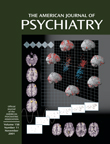Why is the incidence of depression twice as great in women as in men? Is this true in every culture and every stratum of society? What does it have to do with gender roles and the position of women in a given society? What are the connections between changes in mood and changes in women’s hormones premenstrually and postpartum? Why does the gender difference begin at puberty and taper off after menopause? With depression a predominantly women’s disease, what do we know about sex differences in risk factors, symptoms, presentation, comorbidity, and responses to treatments? We have only recently begun to raise these questions, but the neurohormonal, social, and psychological research they have engendered has fascinating implications for both men and women. We do not have definitive answers to any of the questions, but we may now have the definitive resource for those scientists and clinicians interested in the current state of knowledge.
This book is hefty in both size and substance. The content is divided into 31 compact, discrete chapters, encompassing every facet of the issue, from epidemiology through evolution, neuroanatomy, neurochemistry, and psychoneuroimmunology. The book deals with the effects of female-sex and male-sex steroids on brain and behavior; comorbid disorders and related diagnoses, including bereavement and grief, personality disorders, eating disorders, and alcohol and drug abuse; adolescent, premenstrual, and postpartum mood changes; gender issues in psychopharmacological and psychotherapeutic treatment; and feminist perspectives on the etiology, manifestations, and treatment of mood disorders in women. Myths are countered with empirical evidence: women’s alcohol dependence is not less serious than men’s; mood disorders and substance abuse are distinct and not different manifestations of the same underlying condition. The book is replete with interesting data and theories, such as why women with premenstrual dysphoria and eating disorders crave carbohydrates. The identification of gaps in the literature should be an inspiration for researchers.
Most chapters cite and summarize large numbers of relevant studies, although some analyze the literature more critically than others. There is similar variability in the degree to which chapters integrate psychosocial with physiological perspectives and in the inclusion or omission of tables of information such as medication doses and attributes, with more information about hormones than about antidepressants. There is significant content overlap among chapters, but the overlap enables each chapter to stand on its own as a reference or material for a didactic course. This is a purpose for which this volume is apt; it offers a wealth of information for the general professional reader as well.

